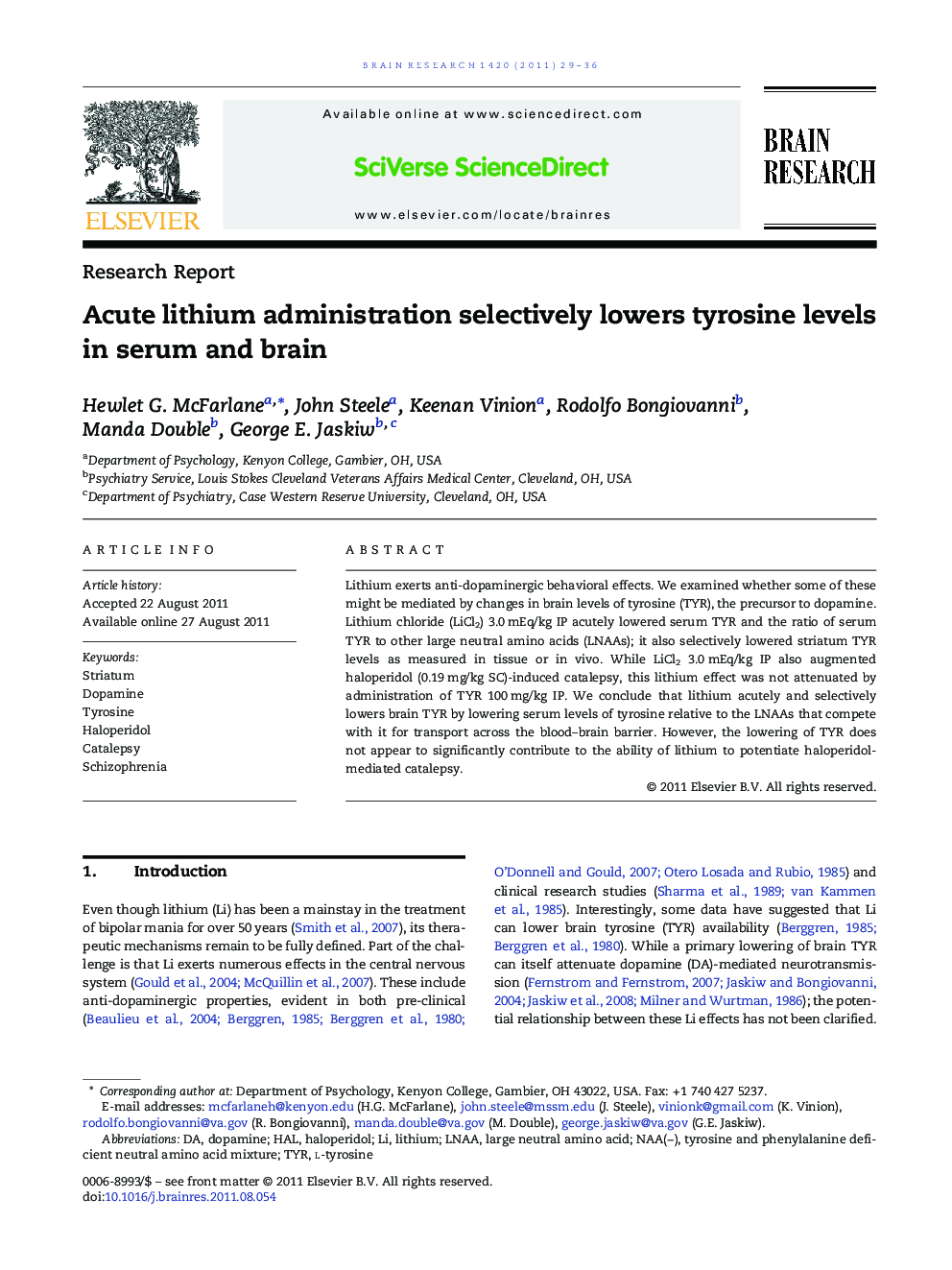| Article ID | Journal | Published Year | Pages | File Type |
|---|---|---|---|---|
| 4325598 | Brain Research | 2011 | 8 Pages |
Lithium exerts anti-dopaminergic behavioral effects. We examined whether some of these might be mediated by changes in brain levels of tyrosine (TYR), the precursor to dopamine. Lithium chloride (LiCl2) 3.0 mEq/kg IP acutely lowered serum TYR and the ratio of serum TYR to other large neutral amino acids (LNAAs); it also selectively lowered striatum TYR levels as measured in tissue or in vivo. While LiCl2 3.0 mEq/kg IP also augmented haloperidol (0.19 mg/kg SC)-induced catalepsy, this lithium effect was not attenuated by administration of TYR 100 mg/kg IP. We conclude that lithium acutely and selectively lowers brain TYR by lowering serum levels of tyrosine relative to the LNAAs that compete with it for transport across the blood–brain barrier. However, the lowering of TYR does not appear to significantly contribute to the ability of lithium to potentiate haloperidol-mediated catalepsy.
► Acute lithium lowers serum tyrosine but not other large neutral amino acids. ► Acute lithium administration selectively lowers brain tyrosine levels. ► Acute lithium potentiates haloperidol-induced catalepsy. ► Tyrosine does not attenuate lithium potentiation of haloperidol-induced catalepsy. ► Behavioral effects of lithium are unlikely due to the lowering of brain tyrosine.
